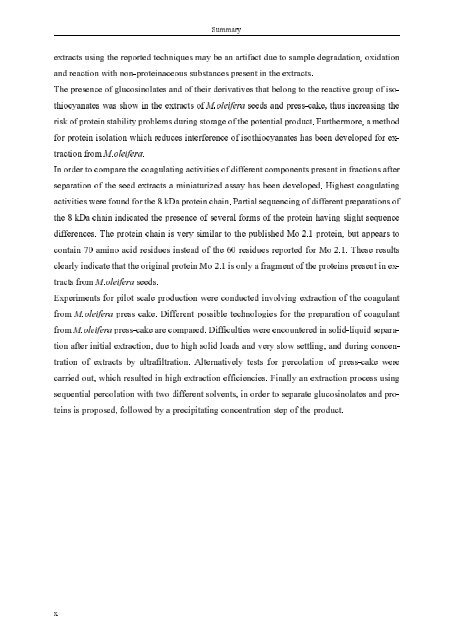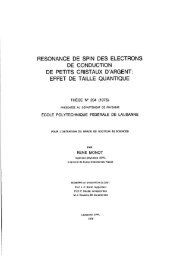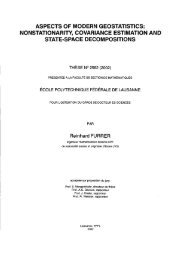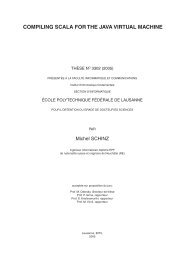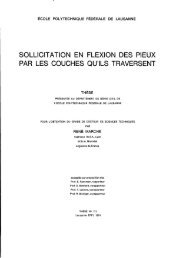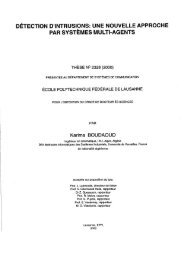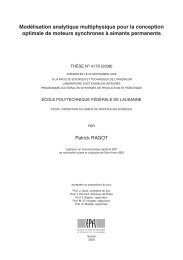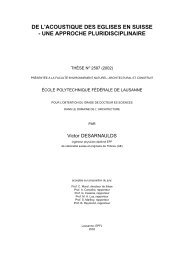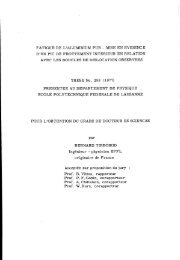coagulants of moringa oleifera lam. seeds purification ... - EPFL
coagulants of moringa oleifera lam. seeds purification ... - EPFL
coagulants of moringa oleifera lam. seeds purification ... - EPFL
Create successful ePaper yourself
Turn your PDF publications into a flip-book with our unique Google optimized e-Paper software.
x<br />
Summary<br />
extracts using the reported techniques may be an artifact due to sample degradation, oxidation<br />
and reaction with non-proteinaceous substances present in the extracts.<br />
The presence <strong>of</strong> glucosinolates and <strong>of</strong> their derivatives that belong to the reactive group <strong>of</strong> iso-<br />
thiocyanates was show in the extracts <strong>of</strong> M.<strong>oleifera</strong> <strong>seeds</strong> and press-cake, thus increasing the<br />
risk <strong>of</strong> protein stability problems during storage <strong>of</strong> the potential product. Furthermore, a method<br />
for protein isolation which reduces interference <strong>of</strong> isothiocyanates has been developed for ex-<br />
traction from M.<strong>oleifera</strong>.<br />
In order to compare the coagulating activities <strong>of</strong> different components present in fractions after<br />
separation <strong>of</strong> the seed extracts a miniaturized assay has been developed. Highest coagulating<br />
activities were found for the 8 kDa protein chain. Partial sequencing <strong>of</strong> different preparations <strong>of</strong><br />
the 8 kDa chain indicated the presence <strong>of</strong> several forms <strong>of</strong> the protein having slight sequence<br />
differences. The protein chain is very similar to the published Mo 2.1 protein, but appears to<br />
contain 70 amino acid residues instead <strong>of</strong> the 60 residues reported for Mo 2.1. These results<br />
clearly indicate that the original protein Mo 2.1 is only a fragment <strong>of</strong> the proteins present in ex-<br />
tracts from M.<strong>oleifera</strong> <strong>seeds</strong>.<br />
Experiments for pilot scale production were conducted involving extraction <strong>of</strong> the coagulant<br />
from M.<strong>oleifera</strong> press cake. Different possible technologies for the preparation <strong>of</strong> coagulant<br />
from M.<strong>oleifera</strong> press-cake are compared. Difficulties were encountered in solid-liquid separa-<br />
tion after initial extraction, due to high solid loads and very slow settling, and during concen-<br />
tration <strong>of</strong> extracts by ultrafiltration. Alternatively tests for percolation <strong>of</strong> press-cake were<br />
carried out, which resulted in high extraction efficiencies. Finally an extraction process using<br />
sequential percolation with two different solvents, in order to separate glucosinolates and pro-<br />
teins is proposed, followed by a precipitating concentration step <strong>of</strong> the product.


